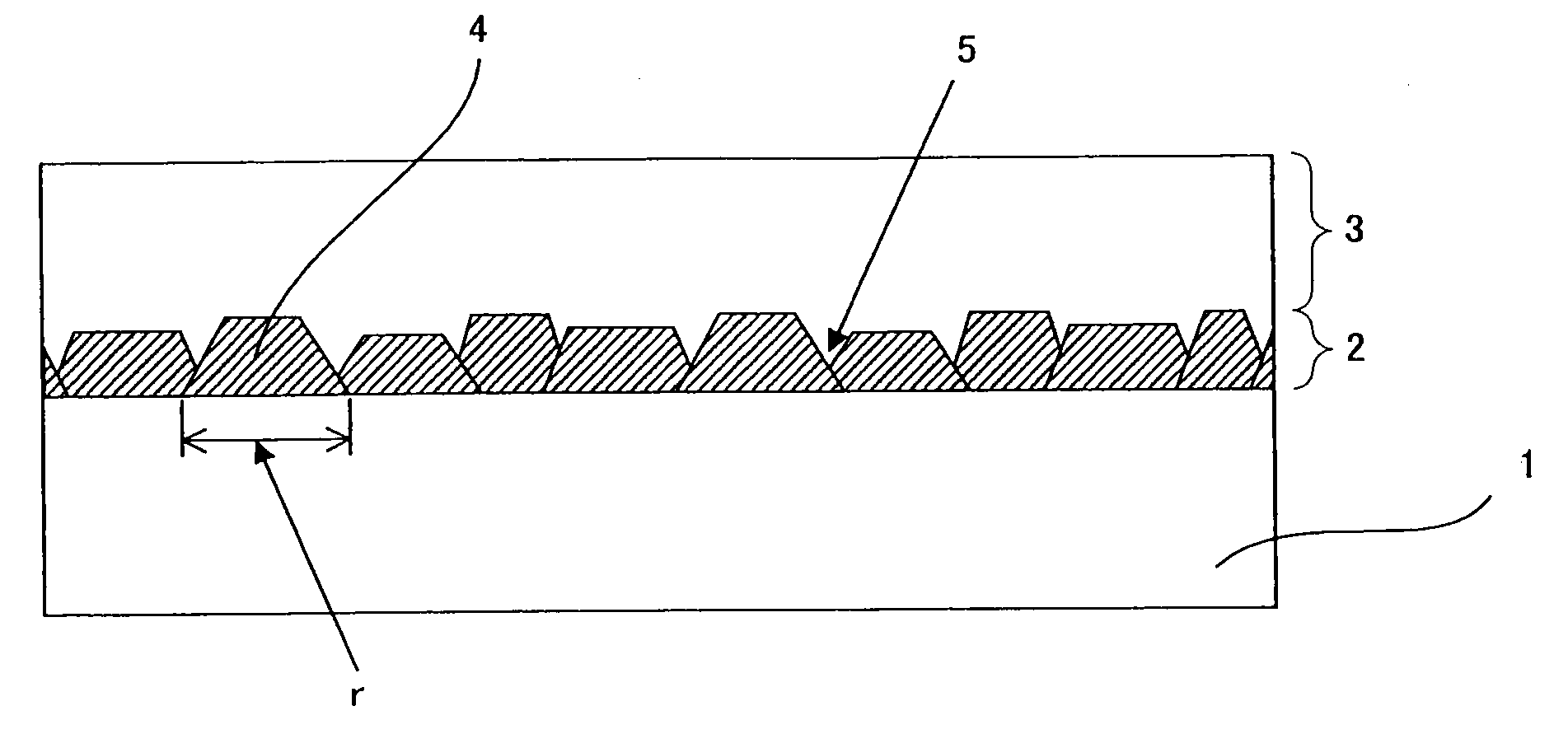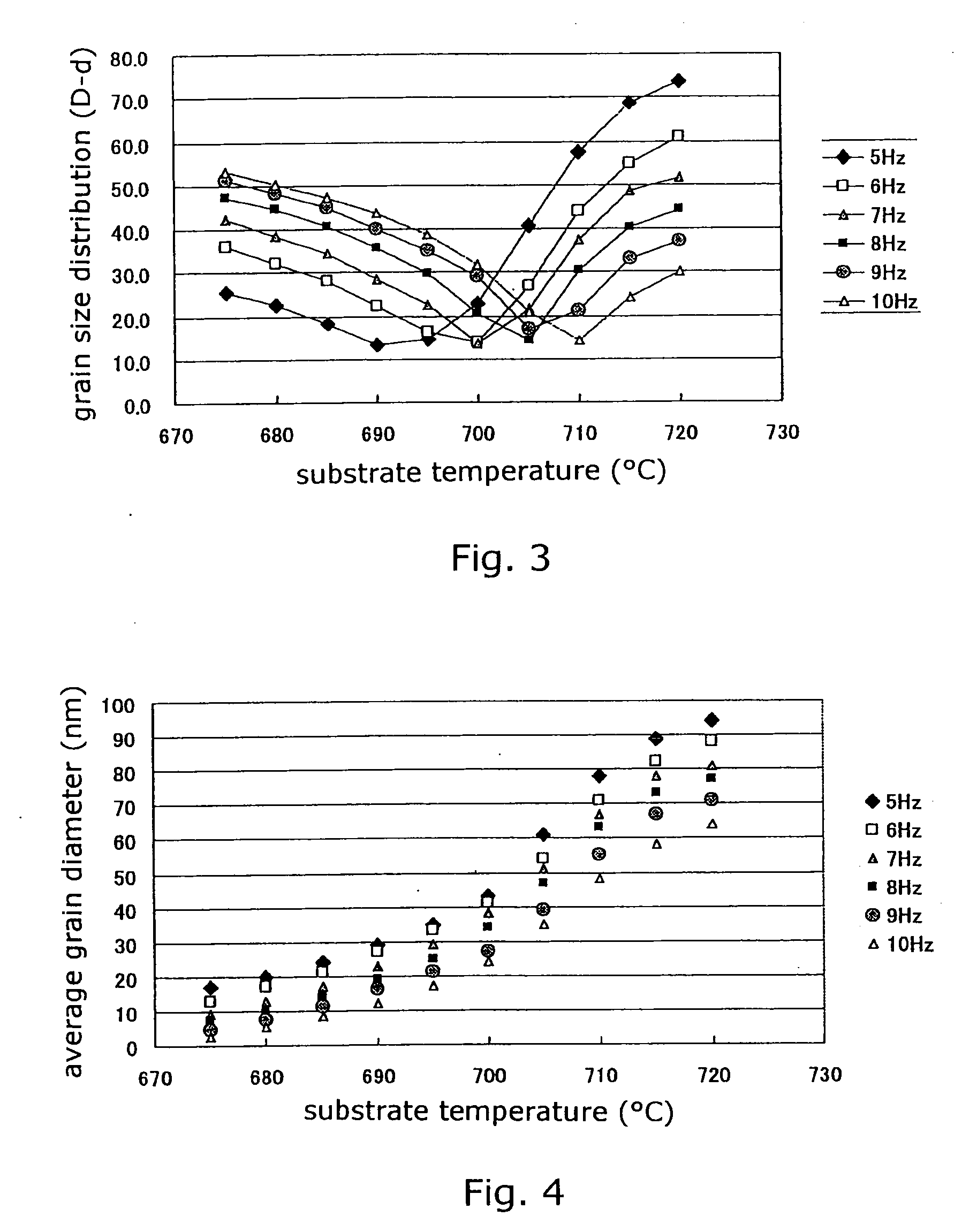Superconducting member
a superconducting member and member technology, applied in the field of superconducting members, can solve the problems of inability to accurately regulate the surface shape of the buffer layer provided on the sapphire substrate, difficult to form a good superconducting film, and difficulty in realizing a large thickness of not less than 300 nm (re)bco film. , to achieve the effect of low cos
- Summary
- Abstract
- Description
- Claims
- Application Information
AI Technical Summary
Benefits of technology
Problems solved by technology
Method used
Image
Examples
examples
[0035]In relationships shown in FIGS. 3 and 4, buffer layers were formed by regulating the grain diameter r [nm] of grain lumps of an oxide constituting a buffer layer 2 and the distribution of the grain diameter for various buffer layer materials. A 500 nm-thick thin YBCO film was grown on the buffer layers. For the superconducting members thus obtained, the critical current density Jc was measured. The results thus obtained were as shown in Table 2. In Table 2, the grain diameter r of the grain lumps of the buffer layer is expressed in a diameter range. For example, 10 nm≦r≦30 nm means that the grain diameter of not less than 90% of grain lumps which can be confirmed by a sectional TEM image is in the range of 10 nm≦r≦30 nm. The same studies have been made for superconducting layers, i.e., a 500 nm-thick thin YbBCO film and a 500 nm-thick thin NdBCO film different from each other in lattice constant. The results are shown in Tables 3 and 4.
TABLE 2DistancebetweennearestneighborJc o...
PUM
| Property | Measurement | Unit |
|---|---|---|
| Temperature | aaaaa | aaaaa |
| Temperature | aaaaa | aaaaa |
| Fraction | aaaaa | aaaaa |
Abstract
Description
Claims
Application Information
 Login to View More
Login to View More - R&D
- Intellectual Property
- Life Sciences
- Materials
- Tech Scout
- Unparalleled Data Quality
- Higher Quality Content
- 60% Fewer Hallucinations
Browse by: Latest US Patents, China's latest patents, Technical Efficacy Thesaurus, Application Domain, Technology Topic, Popular Technical Reports.
© 2025 PatSnap. All rights reserved.Legal|Privacy policy|Modern Slavery Act Transparency Statement|Sitemap|About US| Contact US: help@patsnap.com



